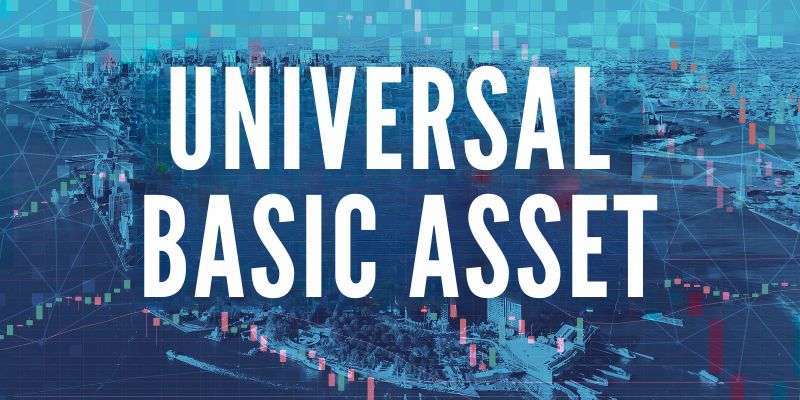
Universal Basic Asset (UBA) is a concept building up some decent forward movement in discussions about social welfare and economic policy. In contrast to Universal Basic Income (UBI), which furnishes people with a normal money payment, UBA focuses on guaranteeing that each approaches a bunch of essential assets that can provide long-term economic security and stability.
Understanding the Concept of Universal Basic Asset
Defining UBA:
At its center, Universal Basic Asset alludes to ensuring all people access to specific basic assets important for a respectable standard of living. These assets might incorporate property, investments, or other types of wealth that produce income or value in esteem over the long haul.
How UBA differs from Universal Basic Income (UBI):
While both UBA and UBI plan to ease poverty and guarantee economic security, they work on various standards. UBI gives people a standard, unqualified money installment, while UBA centers around asset ownership for wealth distribution and empowerment.
The Importance of Universal Basic Asset
Economic stability and security:
By furnishing people with ownership of fundamental assets, UBA advances economic stability and security. Access to assets, for example, housing or investments can act as a financial cushion during seasons of economic difficulty.
Addressing wealth inequality:
UBA can diminish wealth inequality by guaranteeing that everybody has a stake in the economy. By conveying assets all the more evenhandedly, UBA can assist with restricting the wealth gap between rich and poor people.
Examples of Universal Basic Assets
Real estate:
One normal type of UBA is giving access to affordable housing or land ownership. Guaranteeing that people have a spot to live can groundbreakingly affect their personal satisfaction and economic prospects.
Stocks and bonds:
UBA programs may likewise include giving people to partake in publicly exchanged organizations or government bonds. This permits individuals to profit from the growth of the economy and create passive income through profits or interest installments.
Intellectual property rights:
In the digital age, intellectual property rights like licenses, copyrights, and sovereignties can be significant assets. UBA initiatives might try to guarantee that everybody approaches these types of intellectual capital.
Implementation of Universal Basic Asset Programs
Government initiatives:
A few governments have previously tried different things with UBA programs or comparable strategies. These initiatives might include direct asset distribution, appropriations, or incentives to empower asset ownership among the populace.
Private sector involvement:
Notwithstanding government-drove endeavors, the private sector can likewise assume a part in carrying out UBA programs. For instance, businesses could offer workers investment opportunities or profit-sharing game plans as a feature of their pay bundles.
Potential Challenges and Criticisms of UBA
Affordability and funding:
One of the fundamental challenges of carrying out UBA programs is funding them reasonably. Giving universal access to assets can be costly, and policymakers should cautiously consider how to back such initiatives without forcing inordinate taxation rates or expanding public debt.
Impact on incentives:
Pundits contend that UBA could lessen people’s impetus to work or improve assuming they get income from asset ownership no matter what their business status. Adjusting the advantages of economic security with the requirement for labor market participation is a key thought.
Administrative logistics:
Overseeing UBA programs successfully requires strong administrative frameworks to distinguish qualified beneficiaries, and appropriate assets decently, and forestall misrepresentation or misuse. Planning and carrying out these frameworks can be perplexing and resource-escalated.
Case Studies of Successful UBA Programs
Alaska Permanent Fund:
The Alaska Permanent Fund is often referred to as a successful illustration of a UBA program. Laid out in 1976, the fund circulates yearly profits to Alaska occupants from oil incomes, giving them a portion of the state’s natural resource wealth.
Sovereign Wealth Funds:
A few nations have laid out sovereign wealth funds that capability as aggregate assets to support current and future generations. These funds put resources into a broadened arrangement of assets and may disseminate returns or profits to residents.
Future Prospects of Universal Basic Asset
Evolving economic landscapes:
As economies develop and technology propels, the idea of UBA might turn out to be progressively important. Automation and digitization could reshape labor markets and income distribution, making asset ownership significantly more basic for economic participation and security.
Technological advancements:
Arising advancements, for example, blockchain and digital currencies could work with the implementation of UBA programs by empowering straightforward and proficient asset distribution frameworks. Developments in financial technology may likewise make it simpler for people to access and deal with their assets.
Conclusion
In conclusion, Universal Basic Asset (UBA) offers a promising approach to addressing poverty, inequality, and economic insecurity. By guaranteeing that everyone has access to essential assets, UBA programs can promote economic stability, empower individuals, and make a more inclusive society.
For detailed information on returnable assets and their role in modern supply chains, explore our article on WHAT ARE RETURNABLE ASSETS?
